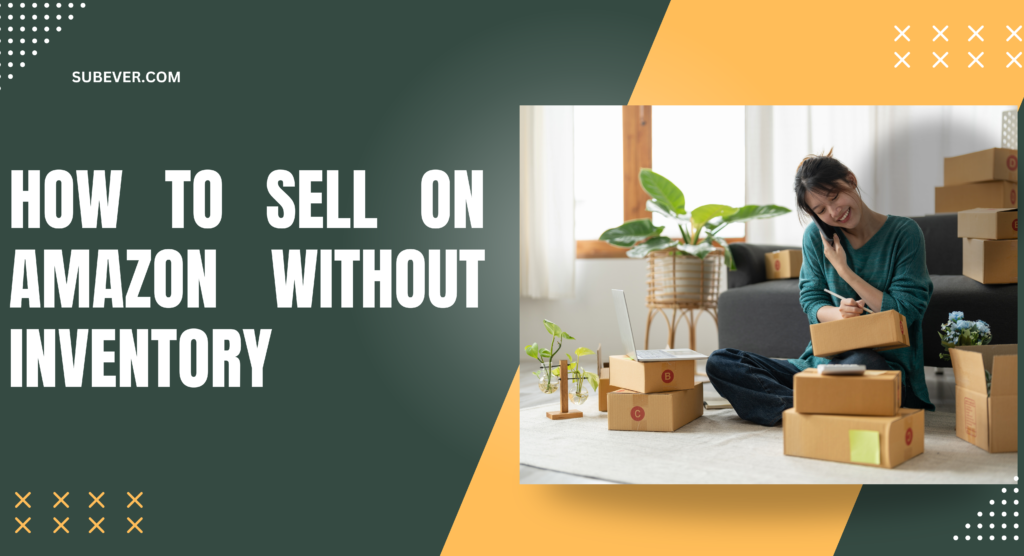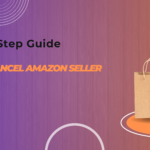Introduction
Selling on Amazon is a lucrative opportunity for entrepreneurs, but managing inventory can be daunting and costly. Fortunately, there are ways to sell on Amazon without holding any inventory. This guide explores various methods such as dropshipping, print-on-demand, and utilizing Amazon’s Fulfillment by Amazon (FBA) program in a way that minimizes inventory hassles. Whether you’re a new seller or looking to expand your business, these strategies can help you leverage Amazon’s vast marketplace without the traditional inventory burdens. Now you can sell on Amazon without inventory.
Understanding the No-Inventory Model
What is a No-Inventory Model?
A no-inventory model allows sellers to offer products for sale without physically storing, handling, or shipping the products themselves. This model can significantly reduce overhead costs and logistical challenges associated with traditional retail.
Benefits of a No-Inventory Model
- Lower Start-Up Costs: You don’t need to invest in large quantities of products upfront.
- Reduced Risk: There’s no risk of unsold inventory.
- Scalability: Easier to scale your business since you don’t need to manage a large inventory.
Methods to Sell on Amazon Without Inventory
1. Dropshipping
How Dropshipping Works
Dropshipping involves listing products on your Amazon store that you source from third-party suppliers. When a customer makes a purchase, the order is forwarded to the supplier, who then ships the product directly to the customer. You never handle the product yourself.
Steps to Start Dropshipping on Amazon
- Find Reliable Suppliers: Look for suppliers who offer dropshipping services. Popular platforms include AliExpress, Oberlo, and SaleHoo.
- List Products on Amazon: Create product listings on Amazon based on the items available from your suppliers.
- Manage Orders: When an order is placed, forward the order details to your supplier.
- Handle Customer Service: Maintain communication with your customers and handle any service issues that arise.
Pros and Cons of Dropshipping
- Pros:
- Minimal upfront investment.
- Wide range of products to choose from.
- Easy to start and scale.
- Cons:
- Lower profit margins.
- Dependency on supplier reliability and shipping times.
- Limited control over product quality and fulfillment process.
2. Print-on-Demand (POD)
How Print-on-Demand Works
Print-on-Demand involves creating custom designs for products such as t-shirts, mugs, or phone cases. These products are only manufactured and shipped when an order is placed, eliminating the need for inventory.
Steps to Start a POD Business on Amazon
- Create Custom Designs: Design unique graphics or slogans for various products.
- Choose a POD Platform: Partner with a POD service like Printful, Teespring, or Merch by Amazon.
- List Products on Amazon: Integrate your POD service with your Amazon store and list your custom-designed products.
- Fulfillment: When an order is placed, the POD service prints the design on the product and ships it directly to the customer.
Pros and Cons of POD
- Pros:
- No inventory costs.
- Unique, customizable products.
- Easy to test new designs and products.
- Cons:
- Longer fulfillment times.
- Limited product types based on POD service offerings.
- Profit margins can be lower due to production costs.
3. Amazon FBA (Fulfillment by Amazon) with Just-In-Time Inventory
How FBA Works
Amazon FBA allows you to store your products in Amazon’s fulfillment centers. Amazon handles storage, packaging, and shipping for you. Using a Just-In-Time (JIT) inventory approach can help you minimize the amount of stock you hold.
Steps to Implement JIT with FBA
- Identify Products with Steady Demand: Focus on products that have consistent sales.
- Negotiate with Suppliers: Arrange for your suppliers to send products directly to Amazon fulfillment centers as needed.
- Monitor Inventory Levels: Use Amazon’s inventory management tools to track sales and replenish stock just in time to meet demand.
Pros and Cons of FBA with JIT
- Pros:
- Amazon handles fulfillment and customer service.
- Prime eligibility can boost sales.
- Reduces need for large storage space.
- Cons:
- FBA fees can add up.
- Requires careful inventory management to avoid stockouts.
- Still involves some level of inventory management.
Tips for Success
Choose the Right Products
Selecting the right products is crucial. Conduct thorough market research to identify products with high demand and low competition. Use Amazon’s tools like Best Sellers Rank and customer reviews to gauge market interest.
Optimize Your Listings
Creating compelling product listings is essential for attracting customers. Ensure your listings include:
- High-Quality Images: Clear, high-resolution images that showcase the product from multiple angles.
- Detailed Descriptions: Informative and engaging descriptions that highlight key features and benefits.
- Keywords: Use relevant keywords to improve search visibility.
Price Competitively
Pricing can make or break your sales. Analyze your competitors’ pricing and set competitive prices while ensuring you maintain healthy profit margins. Consider using dynamic pricing tools to automatically adjust prices based on market conditions.
Focus on Customer Service
Providing excellent customer service can help build a loyal customer base and positive reviews. Respond promptly to customer inquiries, handle returns efficiently, and address any issues professionally.
Stay Compliant with Amazon Policies
Ensure you comply with Amazon’s policies and guidelines to avoid account suspension. Familiarize yourself with Amazon’s terms of service, particularly regarding dropshipping, to ensure your business practices are aligned with platform rules.
Conclusion
Selling on Amazon without inventory is a viable and attractive option for entrepreneurs looking to minimize risk and overhead costs. Whether you choose dropshipping, print-on-demand, or leveraging Amazon FBA with a just-in-time approach, there are multiple paths to success. By carefully selecting products, optimizing listings, pricing competitively, and providing excellent customer service, you can build a profitable business on Amazon without the need for traditional inventory management. Stay adaptable and informed about Amazon’s policies and market trends to ensure your business thrives in the dynamic world of e-commerce.







